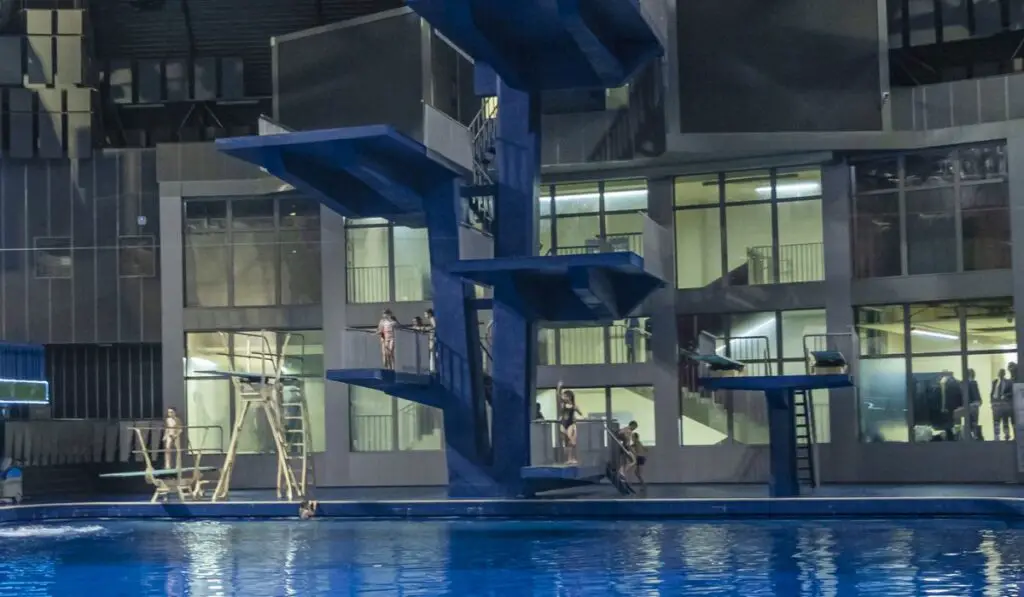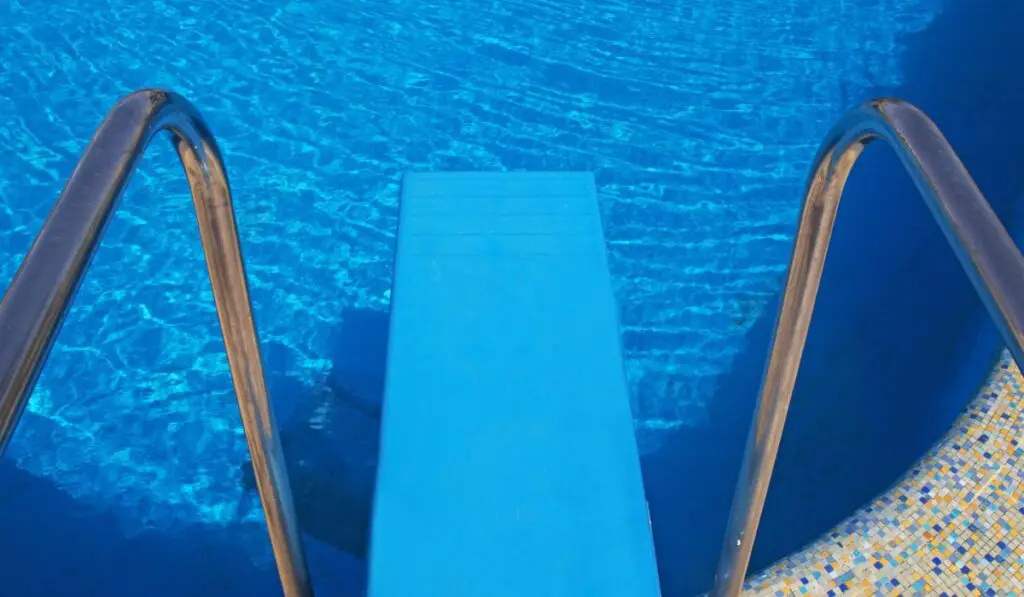Just a decade back, high diving was a favorite activity at local pools. You could climb up to the top of the platform, take a running jump, and feel the adrenaline rush as you flew through the air before plunging into the water below. But now, it seems, high dives are becoming a thing of the past. So, how high are high dives, and are they really disappearing?
The high diving platform can range anywhere from 10 to 30 feet tall. However, many public pools are getting rid of high dives due to safety, liability, and maintenance concerns. In addition, newer pools are being designed with shallower depths, which make high dives impractical.
So while public pools are still very much a part of the summer landscape, the high dive may soon go the way of the dinosaurs. In fact, many pools have already gotten rid of their high dives, and more will likely follow suit in the years to come. Let’s look at what’s behind this trend and what it could mean for the future of swimming.
Do Public Pools Still Have High Dives?

Back in the day, almost every public pool had a high dive board, but now, they’re becoming increasingly rare. Less than a quarter of the pools in the United States currently have a high dive, and most of those are school or university pools where they’re used for competitive diving.
Various factors are contributing to the decline of high dives in public pools — the first is safety. High dives are obviously riskier, and injuries from high diving aren’t uncommon. In some cases, these injuries can be serious, even fatal. As a result, many public pools have decided to err on the side of caution and remove their high dives.
Liability is another factor. The pool management could be held liable if someone is injured while using a high dive. There have been lawsuit cases where pools have been ordered to pay damages after someone was injured on a high dive, which pool operators are very aware of. Insurance companies are also increasingly hesitant to provide coverage for pools with high dives.
In fact, the reluctance of insurers to provide coverage is one of the main reasons pools with all the safety measures in place are choosing to get rid of their high dives.
Then there’s the maintenance factor. Surveys and accident reports over the years have led to calls for greater regulation of high dives, and some states now have laws that require pools to meet certain safety standards if they want to offer high diving.
That includes regular inspections, maintenance, extra lifeguards, safety equipment, and signage. All of this costs money, and many pools have decided that the expense is simply not worth it.
Lastly, high dives require special deep-water pools, which are not always necessary or practical, especially for smaller pools. So most new facilities simply don’t bother with them. All of this has led to a steep decline in the number of high dives in public pools across the United States.
What Is the Height of Most High Dives?
High dives start at around 1 meter, or about 3.2 feet, which the minimum height for a diving board. However, the competitive diving standard starts at 3 meters, or just under 10 feet, which is the minimum height for Olympic diving.
Then there are 5-meter, 7.5-meter, and 10-meter diving platforms. The highest platform in the Olympic competition is 10 meters, or about 33 feet.
High diving platforms can be even higher, up to 20 meters or above. But these are usually only found at demonstration events, like world championships, or in outside extreme sports events.
Public pools usually only have a 1-meter or 3-meter platform. But now that high diving is becoming less common, even these are starting to disappear.
Springboard Diving vs. Platform Diving
High diving boards can be either springboards or platforms.
Springboards use a spring launch mechanism that gives the diver extra height and momentum. That’s why they’re mostly used at lower heights, around 3 meters or less, and favored by gymnastic divers.
Platforms, on the other hand, are stationary rigid boards. They’re often made from concrete or metal and can be found at all heights. The diver runs up and then launches themselves into the air from a standing start. This makes them more suitable for higher dives, where divers need precision and control to execute their dives correctly.
Ultimately, both types of boards have their own advantages and disadvantages, and it’s up to each pool to decide which one they want to use.
How Deep Does a Pool Need to Be to Have a High Dive?

Pool depth is the number one safety consideration when it comes to high dives, and it’s directly related to the height of the platform. The higher the platform, the deeper the pool needs to be.
The world Swimming association FINA and the Association of Pool and SPA Professionals in the USA have detailed guidelines on pool depth requirements.
The minimum depth for a 1-meter (3.2 feet) high diving board is 3.5 meters, or just over 11 feet. The minimum depth for a 3-meter (9.8 feet) platform is 4 meters, or 12.5 feet. And for the Olympic standard 10-meter platform, the pool must be at least 5 meters, or 16 feet.
However, these are just the minimum depths. The shape of the pool also needs to be taken into account. The pool must have a deep end with a gradual slope to provide sufficient cushioning. This is why most high dive pools also have diving wells separate from the main pool.
The pool should also be wide enough so divers have enough space to enter the water safely; the minimum width is 7 meters, or 22.9 feet, required for 1-meter springboard dives. For 10-meter platform dives, the minimum width is 10 meters, or 32.8 feet.
So, technically aside from minimum depth, the pools need to cover many design and safety requirements to accommodate high dives. This is why only a small number of pools have high dives, and the number is declining every year.
